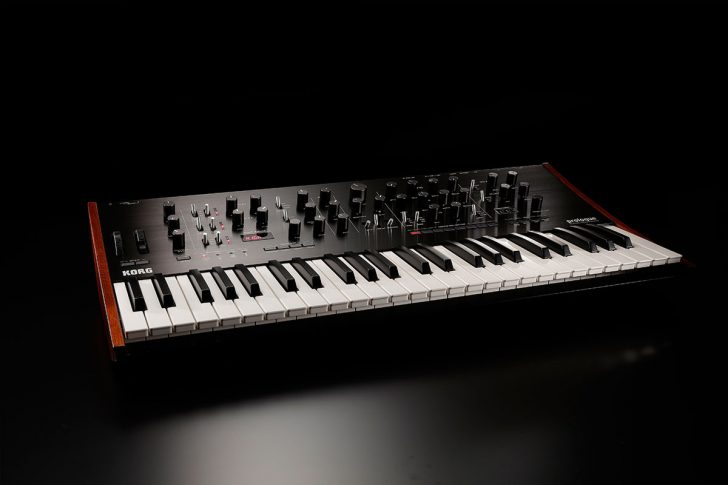When Korg introduced the Prologue synthesizer at the 2018 NAMM Show, they revealed that it was a three-oscillator synth architecture, with a twist.
VCO3 is a ‘newly-developed multi-engine’, that expands the Prologue beyond analog sounds. VCO3 is also unique in that it is open, letting users design their own oscillators and effects.
Now Korg shared this sneak preview of the Prologue software development kit:
 Details are to come, but it looks like the Prologue SDK board may also be a standalone synth.
Details are to come, but it looks like the Prologue SDK board may also be a standalone synth.
We expect more information to be available at Superbooth later this week.


01001001 00100000 01110111 01100001 01101110 01110100 00100000 01100001 00100000 01001011 01101111 01110010 01100111 00100000 01001101 01101111 01101110 01101111 00101111 01010000 01101111 01101100 01111001
01011001 01100101 01110011 00101100 00100000 01100001 00100000 01001101 01101111 01101110 01101111 00101111 01010000 01101111 01101100 01111001 00101100 00100000 01110000 01101100 01100101 01100001 01110011 01100101 00101110
Oh-nay, an org-kay ampler-say inth-say!
Cool! Samplers Rock! Fairlight/Synclavier Baby! ?
LOVE IT!!!!! Im working with Arduino, RasperryPi and AxolotiCore!!!!!!!! these ones MAtch perfectly my new experiments!!!
Aww, looks like an ARM Cortex M4. And the thing right next to it looks like an 8MB RAM chip.
Would love to see an FM voice for the Prologue 🙂
It already has a phase modulation engine with a bunch of source waves – so that already allows you to create a bunch of FM-like sounds.
I need this one. Period.
So is the purpose of the board to serve as a test bed for your custom oscillator/effect, and then you compile and upload it into the synth proper?
The crystal next to the smaller MCU looks like 12.288MHz. My initial guess was that it’s just a debugger, but that would be an unusual frequency for that. It’s also pretty far from the audio input and output jacks, if it drives a codec.
The 12MHz are multiplied by the pll to a much higher frequency for the cpu clock.
You don’t say. But 12.288MHz is an “audio” frequency (256*48kHz), and not very useful for the tasks I though the MCU was intended for. The other MCU has a crystal with a base frequency of 4MHz, which means it has to handle eg. the USB interface.
How long, do you think, it will be until someone comes up with a euro panel for this thing?
My key question about the KORG Prologue is how they manage anti-aliasing for the digital oscillator.
The existing VPM oscillator, phase modulation with a selection of base waves, aliases really badly in the top octave of the keyboard if either the wave form is complex or the phase modulation amount is high.
Novation managed it by sticking their DACs into an FPGA (Field Programmable Gate Array), central to their New Oxford Ocillator technology.
Yes, but that’s clearly not the case for the KORG Prologue which suffers from bad aliasing on the digital oscillator.